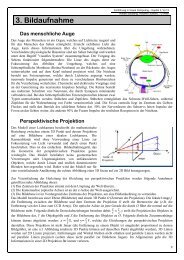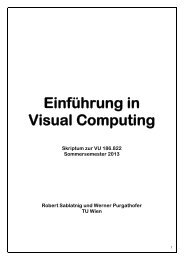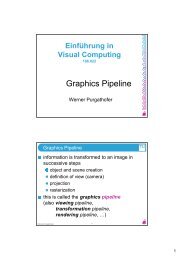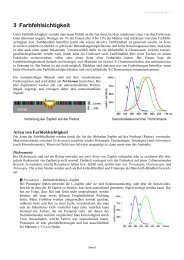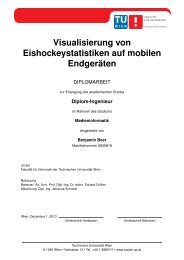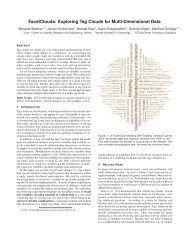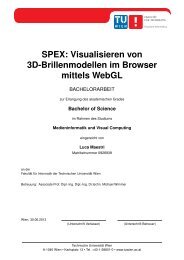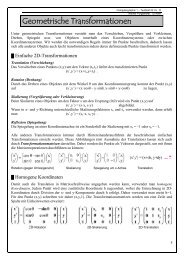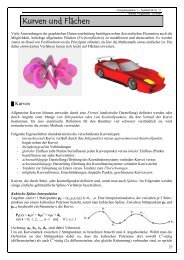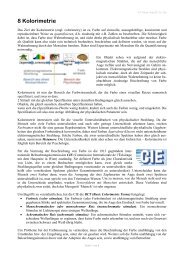Usability of Digital Cameras for Verifying Physically Based ...
Usability of Digital Cameras for Verifying Physically Based ...
Usability of Digital Cameras for Verifying Physically Based ...
Create successful ePaper yourself
Turn your PDF publications into a flip-book with our unique Google optimized e-Paper software.
1 Introduction<br />
In recent years, a lot <strong>of</strong> work has been published in the field <strong>of</strong> photorealistic<br />
computer graphics concerning more accurate rendering algorithms, more detailed<br />
descriptions <strong>of</strong> surfaces, more realistic tone mapping algorithms and many other<br />
improvements <strong>for</strong> the process <strong>of</strong> rendering photorealistic images. Un<strong>for</strong>tunately,<br />
there have been comparatively few attempts on verifying all these algorithms in<br />
practice. In the field <strong>of</strong> photorealistic rendering, it should be common practice to<br />
compare a rendered image to measurements obtained from a real-world scene.<br />
This is currently the only practicable way to prove the correctness <strong>of</strong> the im-<br />
plementation <strong>of</strong> a true global illumination algorithm. However, most rendering<br />
algorithms are just verified by visual inspection <strong>of</strong> their results.<br />
The process <strong>of</strong> verifying a photorealistic renderer can be divided into three<br />
steps [GTS + 97]. First, one has to prove the correctness <strong>of</strong> the light reflection<br />
models through comparisons with measured physical experiments. One way to do<br />
this is to use a gonioreflectometer to measure the full bidirectional reflectance dis-<br />
tribution functions (BRDFs) <strong>of</strong> all surfaces. The second step is to verify the light<br />
transport simulation, or – in other words – the actual rendering algorithm. This<br />
can be done by comparing the rendered image to a measurement <strong>of</strong> a real scene,<br />
or through analytic approaches. The final step in image synthesis generates an im-<br />
age from radiometric data provided by the rendering algorithm; it has to take the<br />
properties <strong>of</strong> the output device and the actual viewing conditions into account. In<br />
this stage psychophysical models are used to achieve convincing results, there<strong>for</strong>e<br />
perceptual experiments are used to evaluate how believable such an image is.<br />
This thesis will focus on the second step: the verification <strong>of</strong> rendering al-<br />
gorithms. Although this step is crucial in photorealistic image synthesis, com-<br />
paratively little work has been published about this topic so far. The problem is<br />
far from being solved, though. Most <strong>of</strong> the available rendering systems are not<br />
verified.<br />
1.1 Motivation<br />
The goal <strong>of</strong> photorealistic rendering is to generate images that look like photo-<br />
graphs <strong>of</strong> a real scene. To verify such a rendering system, the obvious way is<br />
to compare a photograph to a synthetic image <strong>of</strong> the same scene. This thesis fo-<br />
1



